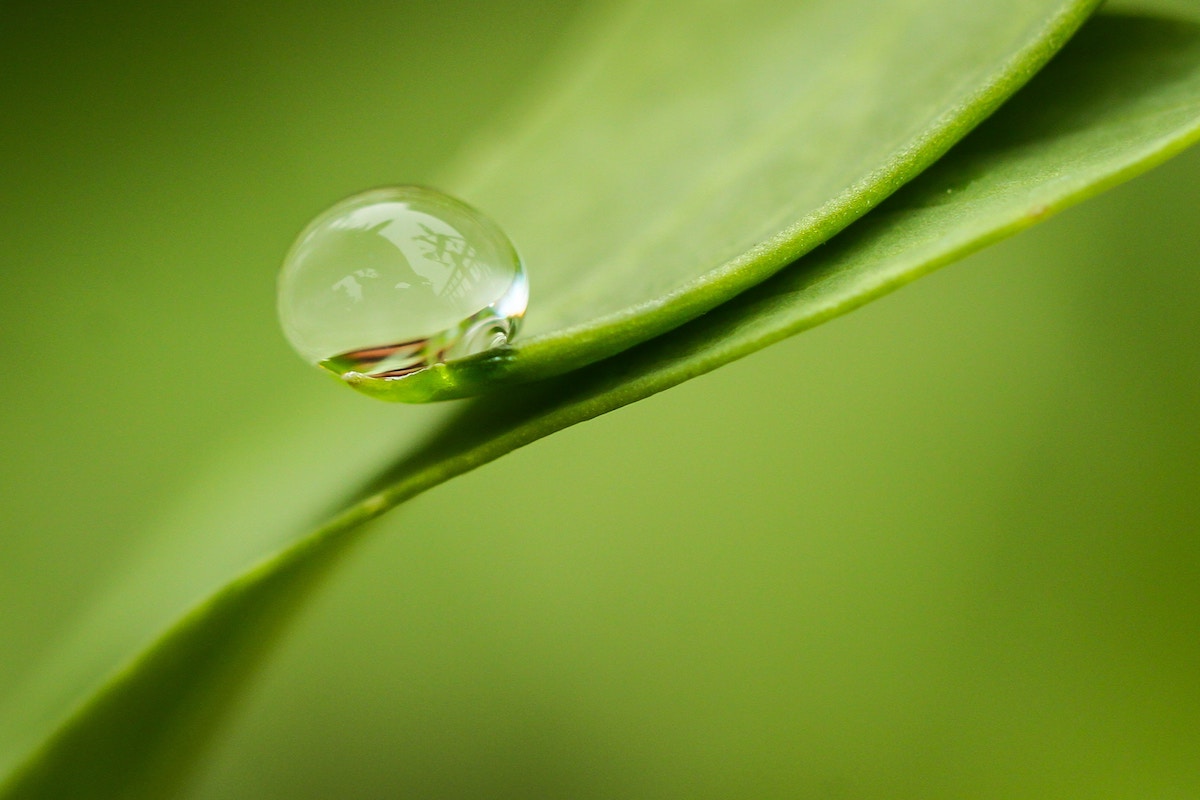The idea of living on the Moon, Mars or an even more distant planet has long captured our imagination. When facts are in short supply, fiction thrives – but science fiction has a habit of eventually becoming science fact.

In 1608, the astronomer and mathematician Johannes Kepler wrote his novel Somnium, in which he describes a dream of travelling to the moon. In the book, lunar dwellers known as daemons describe in great detail how they can transport people to the moon in just four hours. With its references to witches and moon people, this fictitious, almost fairy tale-like work is one of the first novels to be written about the future. Kepler is therefore regarded not only as a founding figure of modern science, but also of the science fiction genre.
His enthusiasm for both these paths is striking, and modern scientists are equally inclined to let their thoughts stray beyond what is currently possible. In all likelihood, many of the ideas that we regard as science fiction today will simply become the new normal in a few years’ time. Three and a half centuries after Kepler’s dream, the first humans finally embarked on a real trip to the Moon, assisted not by daemons but by hermetically sealed protective suits. Nowadays, Mars has replaced the moon in our imaginations as a new and unexplored world that offers the perfect backdrop for our wildest dreams of the future. It is likely to be decades before the first humans set foot on Mars, but researchers have been evaluating data from space probes for years to gain a better understanding of the red planet.
Measurements on Mars
On 26 November 2018, the US space agency NASA successfully landed its InSight spacecraft on Mars. The mission’s goal is to gather more information on the planet’s interior structure, formation and evolution. To achieve this, the lander is equipped with an array of technical instruments, the most important of which is a seismometer to record marsquakes. ETH Zurich developed the electronics used in the instrument and is now evaluating and interpreting the data on NASA’s behalf.
ETH’s InSight Mars activities are headed up by Domenico Giardini, Professor of Seismology and Geodynamics at ETH Zurich: “This is the first time we’ve had a high-precision weather station on Mars for such a long period of time,” he says enthusiastically. And, so far, the mission is going well. “The seismometer is working perfectly and we’re learning a lot.” The instrument has already captured four events that remain unexplained. One of the signals came from just a few hundred kilometres away, says Giardini, while the others originated from more distant locations.
ETH researchers are still unsure what triggered the seismometer, but options include a marsquake, a meteorite impact, a volcanic eruption or strong gusts of wind. “We’re working in unchartered territory here,” says Giardini. He compares the situation to that of scientists in the mid-19th century who made the first attempts to record tremors at the earth’s surface. “If an earthquake occurred in Japan, for example, European researchers picked up the vibrations but had no idea where they came from.”

It is equally challenging for today’s scientists to discover what prompted the readings on Mars. Seismic waves travel through the red planet differently than they do on Earth, so marsquakes cannot be classified as such until the scientists have determined how much the waves change as they travel from the source to the seismometer. ETH researchers are currently working on the assumption that one of the four events logged by the instrument was a marsquake. “What’s surprising is that the signal was closer to that of a moonquake than an earthquake,” says Giardini. This could point to a similarity between the crusts of the Moon and Mars, but the scientists would need stronger quakes to confirm that thesis.
Plants for distant planets
It becomes abundantly clear from talking to Giardini that reliable knowledge about Mars is in short supply – and that the cost and effort involved in learning more about the planet’s composition are truly astronomical. The same applies to the nagging question of whether Mars actually contains traces of life, though Giardini reckons it is only a matter of two or three decades before we will know the answer to that question.
In the meantime, fiction will continue to thrive where facts are scarce. Humans have long speculated on how we could travel to Mars and colonise other planets, and today’s entertainment industry is no exception. One recent example is the 2015 film The Martian, which tells the story of an astronaut left behind on Mars who has to fight for survival until help arrives. The astronaut, played by Matt Damon, stocks up his dwindling food supplies by mixing human excrement with Martian soil to grow potatoes. But how realistic would this fictional scenario be in real life?
Grace Crain is an ETH doctoral student working on the MELiSSA project run by the European Space Agency (ESA), which aims to make the Moon or Mars habitable, at least for astronauts confined to a permanent base. Crain specialises in space farming: in other words, cultivating plants in space. She investigates how to recycle human excrement to grow food. “The only way you could spend any significant period living on an alien planet would be through recycling,” says the American student, daughter of an astrophysicist and herself an avid childhood reader of science fiction novels who has the solar system tattooed on her forearm. She therefore argues that the premise of the film is impressively realistic. “After all, it would be very inefficient to constantly transport food and drink to Mars.” Unfortunately, however, the potatoes Matt Damon grows in The Martian would be inedible. “Mars sand is toxic to humans!”
“The only way you could spend any significant period living on an alien planet would be through recycling.”
Grace Crain
Nobody has yet found the perfect formula for using urine and faeces to grow food-producing plants, but Crain and various other researchers are hard at work searching for the solution. “It’s still a matter of overcoming a mental block, because in the Middle Ages many people died from drinking water contaminated with human faeces.” With today’s technology, however, nobody would have to worry about that rather unpleasant scenario.
The American researcher spends her days in a greenhouse at the Strickhof research centre in Lindau, investigating which urine composition makes plants thrive most. The urine comes from the toilets at Eawag, the Swiss Federal Institute of Aquatic Science and Technology. The Eawag spinoff Vuna then processes it into the liquid fertilizer Aurin.
One of the biggest problems, says Crain, is that the urine contains high levels of salt, which many plants don’t like. As well as tolerating salt, the plants she chooses must also be efficient in converting CO2 to oxygen and provide adequate nutrition and clean water for the astronauts living inside a Martian base. Crain is currently experimenting with the soybean.
Moon habitat on the Matterhorn
Establishing a permanent base on an alien planet is also one of the goals of the interdisciplinary student project IGLUNA, which is hosted by the Swiss Space Center. The IGLUNA challenge focuses specifically on gathering students to collaborate in a space-related project and demonstrate a potential moon habitat. Students from all over Europe are investigating what permanent lunar housing might look like and exploring the various technologies that could enable people to live in an extreme environment. The first components of such a habitat are now on public display inside the Glacier Palace at the Matterhorn Glacier Paradise and in Zermatt town centre, featuring contributions from a total of 20 teams from 9 European countries.
The individual projects cover many of the challenges of living on the moon, including how to produce clean air, drinking water, food and energy. They also encompass technologies designed to make navigation easier and improve astronauts’ well-being. “The universe provides students with a fantastic source of motivation and inspiration,” says Tatiana Benavides, manager of the Swiss Space Center hub at ETH Zurich and coordinator of the project.
The question of when we will see the first humans living in a permanent base on the moon or Mars is still very much up in the air. Fortunately, though, many of the technologies that researchers are developing with the goal of exploring alien planets also have their uses on Earth. For example, the urine-based fertiliser that ETH doctoral student Grace Crain is testing for space deployment could also be used on our own planet. And it would be nothing short of an agricultural revolution if it could one day replace chemical fertilisers.
Perhaps, in the end, the primary result of our romantic imaginings of life on another world might be to help us survive on our own planet. Yet that doesn’t rule out the possibility of humans eventually ending up settling on Mars, whether temporarily or permanently.
Sometimes science fiction turns into reality quicker than we might expect, upsetting all our established certainties in the process. When Johannes Kepler dreamed up his journey to the Moon in Somnium in the early 17th century, his main goal was to convince his readers that the Earth was not the centre of everything human and divine. Just one year later, he published the work Astronomia Nova, nowadays regarded as one of the first scientific proofs that the Earth moves around the Sun – and not vice versa.
Originally appeared in ETH Zurich.










